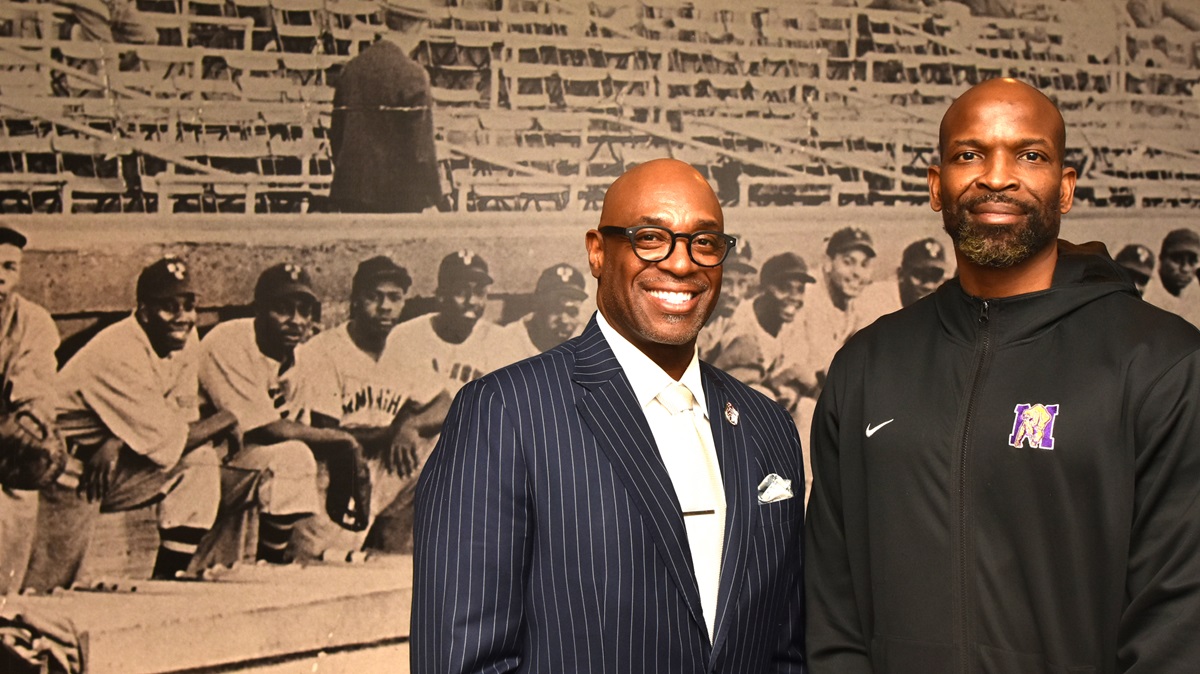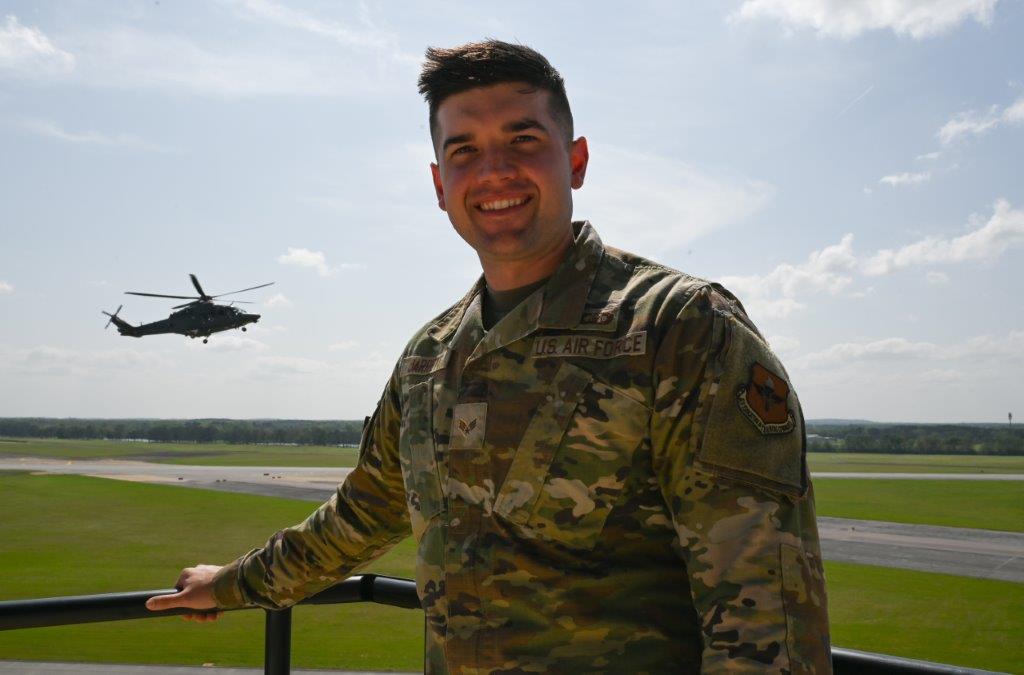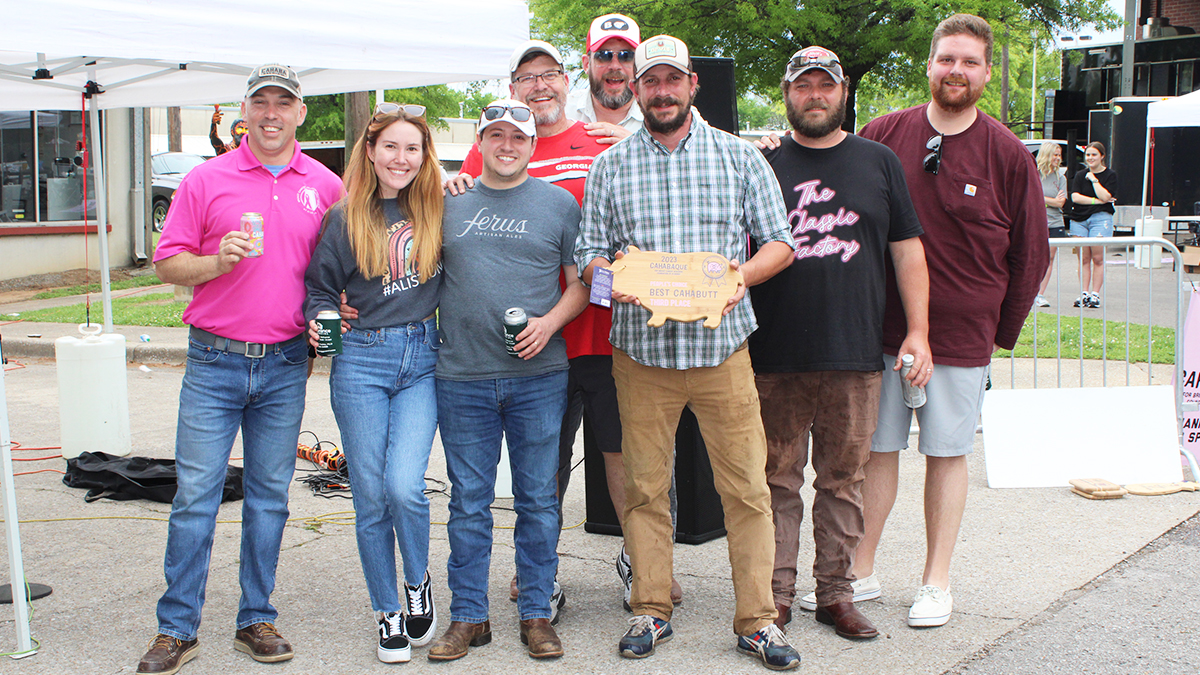Habitat Tuscaloosa breathes new life into Alabama city after ‘day of infamy’

April 27, 2011, was truly a day of infamy, as tornadoes killed 253 residents and delivered overwhelming destruction to parts of Alabama. An EF4 multiple-vortex tornado tore a 5.9-mile swath across parts of Tuscaloosa, destroying homes and businesses. In the midst of tragedy, Habitat for Humanity Tuscaloosa helped bring healing and restoration to the city. On the 10th anniversary of the tragedy, Habitat Tuscaloosa will dedicate its 87th home, which happens to be the final home added to Juanita Drive, where numerous tornado survivors reside. (Alabama NewsCenter)
On April 27, 2011, a powerful EF4 multiple-vortex tornado hit Tuscaloosa, tumbling brick homes into rubble and smashing wood structures into toothpicks.
 The 190-mile-per-hour winds destroyed about 5,000 buildings in T-town, including thousands of homes and apartments. The devastation forced the University of Alabama to close the school year.
The 190-mile-per-hour winds destroyed about 5,000 buildings in T-town, including thousands of homes and apartments. The devastation forced the University of Alabama to close the school year.
RELATED: Ten years later, April 27 tornado outbreak still scars Alabama landscape and hearts
RELATED: 2011 tornado shook Tuscaloosa, but strengthened community’s spirit
RELATED: A decade later, east Alabama tornado victims still recovering from 2011 storm
RELATED: Alabama communities, nonprofits rallied to aid neighbors after 2011 twisters
RELATED: Alabama Power’s infrastructure suffered historic damage during the April 2011 storms and tornadoes
RELATED: Little by little, Alabama town of Phil Campbell revives its spirit in decade since tornado
RELATED: Alabama National Guard changed approach to managing disasters days before April 2011 tornadoes
RELATED: Alabama meteorologists remember April 27, 2011 tornadoes
RELATED: Alabama Power leaders recall April 27, 2011 tornadoes and restoration effort
RELATED: Wooley’s ‘forever’ home is last Habitat house at Juanita Drive in Tuscaloosa
RELATED: From Nick Saban to a Hackleburg human cross, Alabama marks April 27, 2011 tornadoes anniversary
Like a phoenix rising from the ashes, Tuscaloosa’s tornado-devastated neighborhoods continue to be reborn, thanks in part to Habitat for Humanity of Tuscaloosa. The work of this nonprofit – and the generosity of thousands of volunteers who arrived from all over – has been life-changing for those whose worlds disappeared in a whirlwind.
Helping victims come back after deadly storm
The tornado took an unmeasurable toll on Rosedale resident Vickie Edwards. On that day, Edwards’s daughter, Arielle, was gravely injured and her youngest granddaughter, Makayla, was killed by the storm. Proof of the wind’s destructive power, Edwards’ left leg was severely injured and she now walks with a cane. For seven years after the tornado, her family moved from one rental house to another, leaving Edwards to feel as though she’d forever be a wanderer, without a home to call her own.
For Edwards, June 11, 2019, remains bittersweet: It is not only the anniversary of Arielle’s death from her tornado injuries, but also marks the long-awaited move to their Habitat home at 9 Juanita Drive.
Earnestine Burrell was among residents near Rosedale who lost every earthly possession. Burrell in July 2014 took the keys to her Habitat home at 36 Juanita Drive.
Habitat Tuscaloosa is preparing to dedicate another house at 106 Juanita Drive, which will be Teandre Wooley’s home. The dedication will take place April 27, the 10th anniversary of the tornado devastation.
Ellen Potts knows the life story of each family residing in the pleasant neighborhood of Habitat homes on Juanita Drive. In an odd way, the storms breathed new life into the organization, said Potts, executive director of Habitat Tuscaloosa. Since the massive destruction in 2011, Habitat has built 87 houses, including Wooley’s – the 34th and final home built along Juanita Drive.
“That last year or so before the storms, we were not building any houses,” said Potts, who was tapped to lead the nonprofit in March 2013 after serving as a longtime volunteer. “We basically went from not building any houses to 16 to 18 per year right after the tornado. Now, we’ve found our ‘cruising altitude’ with eight to 10 houses a year. That’s what we’ll end up building with the new changes we have, once we get out from under COVID restrictions in terms of our volunteers.”
After so many years, Potts and her team were shocked to learn the Wooleys – the family whose home will be dedicated later this month – lost everything in the tornado.
“We used to ask that all the time, but we don’t ask that anymore,” said Potts, a Tuscaloosa resident since 1997. “It has been an amazing journey for us, a horrible, horrible thing with the tornadoes – the lives lost, the people who were severely injured, like Vickie Edwards, the family members they lost, and many of our homeowners and others who lost their lives, and the physical limitations people endure because of their injuries.”
Amid huge tragedy, the efforts and goodwill of thousands of people have brought healing and transformation to Tuscaloosa.
“We had at Habitat over 26,000 volunteers from 50 states, six continents and the local area come and help us build the 86 houses we’ve built, and counting,” Potts said. “And we’ve repaired about 275 more. Some of those were tornado houses, most of them were not. People kept coming for years afterward. It is such a testament to the generosity of our fellow human beings. It’s been wonderful to watch.”

The April 27, 2011, tornado did unprecedented damage to Tuscaloosa. (Alabama NewsCenter)
Potts reflected on how the incredible tragedy affected the people of Tuscaloosa and her organization.
“I think it brought our community together in a way that could not be duplicated without that horrible situation,” Potts said. “Our organization was nearly brought back to life, I would say. We were able to serve our mission and to really become a viable partner with the rest of the community to provide affordable housing and home ownership opportunities to people that probably otherwise would not have had those opportunities, most of them.”
Providing tornado-safe homes for the less fortunate
Habitat Tuscaloosa builds homes according to Fortified Silver Construction codes, a nationally recognized construction standard that reduces damage from severe weather, providing peace of mind for homeowners. From the top down, houses are built to withstand 155 mph winds.
“We build a high-quality house,” Potts said. “The roofing system is sealed to prevent water damage. We add a tornado-safe room that meets FEMA standards, to make the house even safer.”
Habitat serves people whose household income is at or below the 80th percentile of the area median income for Tuscaloosa County.
“We serve people who need an opportunity and could probably not go to a bank to get a mortgage,” she said. “The most exciting thing is to call them and say they’ve been chosen, and hear a lot of whoopin’ and hollerin’ and excitement. That’s such a joy.”
Following approval by the Habitat board, homeowners select from nine exterior styles, and choose their home floor plan and exterior color from those available through Habitat. The nonprofit’s “bread and butter” house consists of three bedrooms and two baths. The number of bedrooms is based on the size of the family.
Then the hard work begins. Homeowners start working at Habitat job sites, take financial home-ownership preparation classes through the University of Alabama’s Home First program with one-on-one mentoring, and take home-maintenance classes at Lowe’s or Home Depot, which counts toward 250 to 350 hours of a homeowner’s sweat equity.
Partnering with Nick’s Kids Foundation
Since August 2011, Habitat Tuscaloosa has partnered with the Nick’s Kids Foundation, birthed by Nick and Terry Saban.
With Alberta reeling from the storms, Terry Saban decided to build 13 homes – one for each of the University of Alabama’s national football championships. When the Crimson Tide delivered national championships in 2011 and 2012, the program expanded to build 15 homes.
Potts said that Crimson Tide and Kent State’s Golden Flashes football players volunteered together at a Habitat work site in September 2011.
In 2019, the Crimson Tide defeated the Clemson Tigers, earning Alabama’s 16th National Championship. Right away, Nick and Terry Saban began fundraising for a 16th Habitat home. Later that year, the Sabans awarded Potts with a Lifetime Achievement plaque in thanks for her outstanding efforts to help Tuscaloosa families obtain homes.
Building ‘forever homes’
Habitat Tuscaloosa is in the business of making dreams come true.
For Joselyn Hamner, Habitat is providing an escape from a rental home with a leaky roof and plumbing that doesn’t work properly. The past few years, Hamner and her children have lived with her mother, Jacqueline.
“The house we were staying in really wasn’t livable,” said Joselyn Hamner, a custodian at the University of Alabama.
Hamner contacted Potts, who offered new hope for the future. Hamner completed a Habitat application, and the organization offered to help. Habitat poured the concrete slab for Hamner’s three-bedroom, two-bathroom home at Pine Street in Tuscaloosa.
On May 3, Hamner will begin investing the required “sweat equity” into her 1,200-square-feet “forever home.”
“Because of COVID, it’s thrown things behind,” Hamner said. “I hadn’t been able to help during the pandemic. When we get started May 3, everyone will be wearing masks and social distancing.”
Hamner plans to decorate her 5-year-old son’s room with a University of Alabama sports motif, and will outfit her 1-year-old daughter’s room in shades of pink. The nonprofit High Socks for Hope Foundation will furnish the home.
“I can truly say I’ve met some nice people through Habitat, and I’m so excited to become a first-time homeowner,” Hamner said with a smile. “I’m looking forward to having my own home and having stability. It’s really a blessing.”
Planning a brighter future for Tuscaloosa
Potts said Habitat Tuscaloosa wants to serve more people in unique and innovative ways while staying true to its mission.
The nonprofit is starting a training program to teach construction jobs and trade skills, providing young people with hands-on experience while learning about the industry. Potts hopes that other Habitat affiliates follow their lead.

Alabama Gov. Kay Ivey and the Association of the U.S. Army on Feb. 26, 2020, thanked Potts (left) for her service to Habitat Tuscaloosa. (Donna Cope / Alabama NewsCenter)
“This will provide a better opportunity to make a good living,” Potts said. “Anywhere you have a trade school and a Habitat affiliate, this program can be duplicated.”
Habitat also is partnering with the Dannon Project, a Birmingham nonprofit that works with nonviolent and young adult offenders to lower the recidivism rate. Recidivism – or the rate of return to incarceration – is above 65%. After taking part in the Dannon Project, only 3% of adults 25 and older are incarcerated. The recidivism rate is 8% for adults ages 18 through 24.
“The intent is to take a young person and train them in a high-paying, high-demand position, and give them the skills to be successful,” Potts said. “We’ve realized that we can be a part of this with the Tuscaloosa Career and Technology Academy and the Dannon Project, and we can provide even more benefits to our community while providing employers with skilled labor.”
To support the new Operation Transformation project and put young people to work, Habitat Tuscaloosa is buying 40 lots in west Tuscaloosa, about a half-mile from the career and technology academy.
Potts sees the program as a natural course for Habitat Tuscaloosa.
“Our mission is to put God’s love into action,” Potts said. “Habitat for Humanity brings people together to build homes, community and hope. We seek to serve more people in unique and innovative ways while staying true to our mission.”














